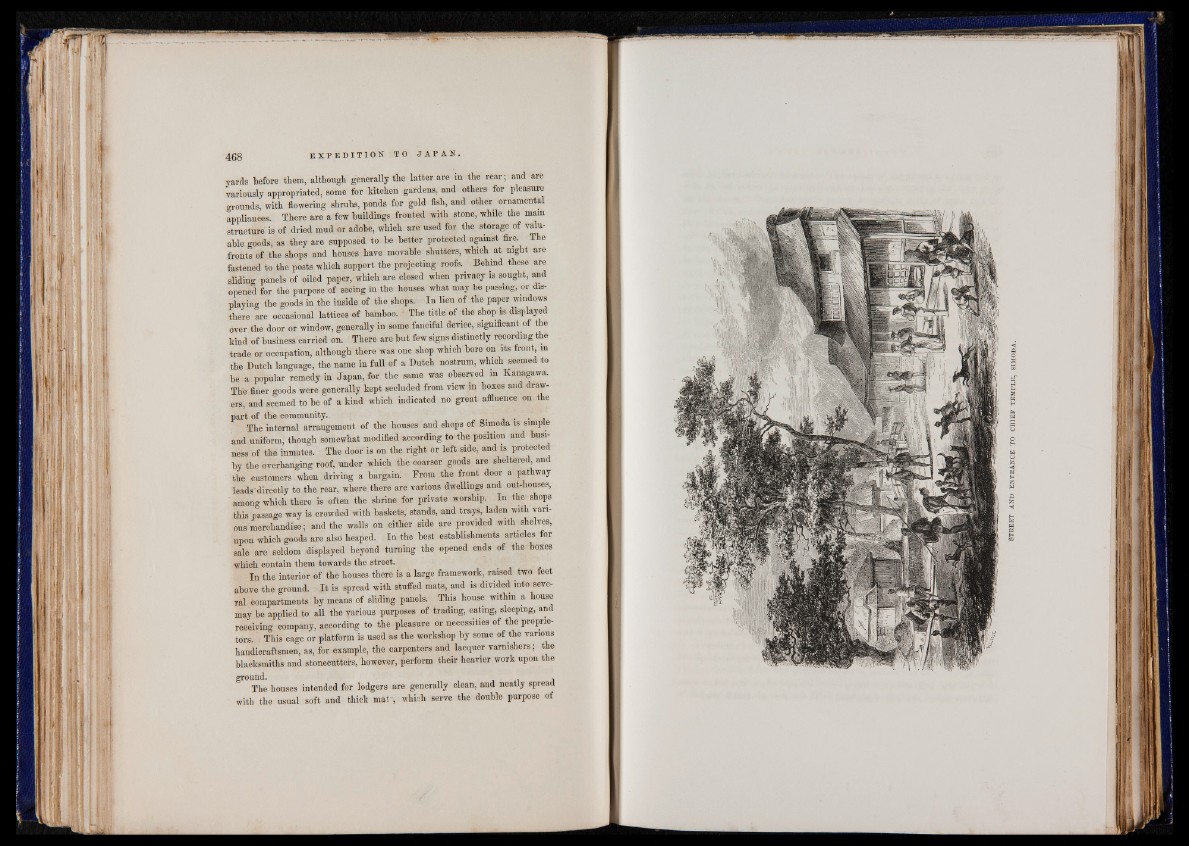
yards before them, although generally the latter are in the rear; and are
variously appropriated, some for kitchen gardens, and others for pleasure
grounds, with flowering shrubs, ponds for gold fish, and other ornamental
appliances. There are a few buildings fronted with stone, while the mam
structure is of dried mud or adobe, which are used for the storage of valuable
goods, as they are supposed to be better protected against fire The
fronts of the shops and houses have movable shutters, which at night are
fastened to the posts which support the projecting roofs. ^ Behind these are
sliding panels of oiled paper, which are closed when privacy is sought, and
opened for the purpose of seeing in the houses what may be passing, or displaying
the goods in the inside of the shops. In lieu of the paper windows
there are occasional lattices of bamboo. The title of the shop is displayed
over the door or window, generally in some fanciful device, significant of the
kind of business carried on. There are but few signs distinctly recording the
trade or occupation, although there was one shop which bore on its front m
the Dutch language, the name in full of a Dutch nostrum, which seemed to
be a popular remedy in Japan, for the same was observed in Kanagawa.
The finer goods were generally kept secluded from view in boxes and drawers,
and seemed to be of a kind which indicated no great affluence on the
part of the community.. 1
The internal arrangement of the houses and shops of Simoda is simple
and uniform, though somewhat modified according to the position and business
of the inmates. The door is on the right or left side, and is protected
by the overhanging roof, under which the coareer goods are sheltered, and
the customers when driving a bargain! From the front door a pathway
leads’directly to the rear, where there are various dwellings and out-houses,
among which there is often the shrine for private worship. In the shops
this passage way is crowded with baskets, stands, and trays, laden with various
merchandise; and the walls on either side are provided with ^ shelves,
upon which goods are also heaped. In the best establishments articles for
sale are seldom displayed beyond turning the opened ends of the boxes
which contain them towards the street.
In the interior of the houses there is a large framework, raised two feet
above the ground. I t is spread with stuffed mats, and is divided into several
compartments by means of sliding panels. This house within a house
may be applied to all the various purposes of trading, eating, sleeping, and
receiving company, according to the pleasure or necessities of the proprietors.
This cage or platform is used as the workshop by some of the various
handicraftsmen, as, for example, the carpenters and lacquer vamishers; the
blacksmiths and stonecutters, however, perform their heavier work upon the
81 The houses intended for lodgers are generally clean, and neatly spread
with the usual soft and thick mat-, which serve the double purpose of